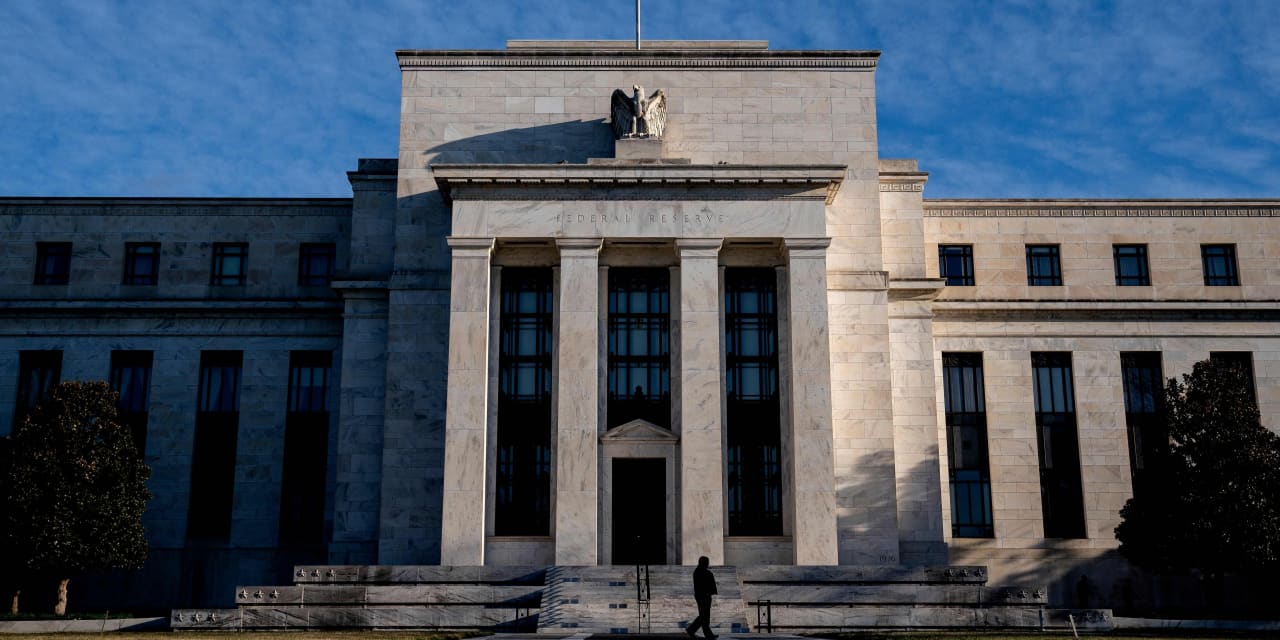Traders are starting to throw in the towel on hopes that the Federal Reserve will cut interest rates in March, just as one of the bond market’s most closely followed measures of long-term inflation expectations is edging higher.
Fed-funds futures traded at levels on Friday that imply a 52.6% chance of no quarter-point rate cut at the Fed’s March meeting, according to the CME FedWatch Tool. That is the highest likelihood of no action at that meeting in more than a month. In addition, traders pulled back slightly on the chances of up to seven rate cuts by December.
Meanwhile, the 5-year, 5-year forward inflation-expectation rate rose to 2.4% as of Thursday — up from 2.25% at the start of this year, according to the most recent data from the Federal Reserve Bank of St. Louis. While the magnitude of the rate’s climb might seem slight, it is the upward trajectory that matters. The 5-year, 5-year forward rate is seen as offering a more timely read than Friday’s report from the University of Michigan, which showed that inflation expectations for the year ahead fell to the lowest level since December 2020.
A gauge that tracks expectations for average inflation in the five-year period that begins five years from now is nudging higher after a raft of strong U.S. data this week. Data is as of Thursday.
Federal Reserve Bank of St. Louis
“There is probably some element of the University of Michigan data that’s somewhat backward-looking,” with consumers expecting further declines in inflation due to falling gas prices last year, said Thomas Simons, U.S. economist at Jefferies
JEF,
“Markets are looking at inflation more closely and thinking it could get quite sticky,” Simons said via phone on Friday. All of this “certainly suggests that the five to seven cuts envisioned by markets are totally wrong. If inflation trends higher or continues to stay sticky where it is, some of those cuts will need to come out.”
Investors and traders began 2024 with hopes that inflation would continue to ease toward the Fed’s 2% target, which would then allow policy makers to deliver what’s known as “maintenance” cuts to keep interest rates from becoming too restrictive. Instead, Fed officials have been pushing back on the market’s thinking, particularly around the idea of a first rate cut being delivered in March.
Inflation, based on the annual headline rate of the consumer-price index, moved up to 3.4% in December, despite the fact that the Fed’s main policy target has been between 5.25% and 5.5%, the highest level in almost 23 years.
Traders look to the 5-year, 5-year forward rate because it offers a signal of where inflation is likely to settle over the long term, after near-term risks have abated. The rate also nudged up in November in the absence of any major developments, underscoring the bond market’s continued focus on the possibility of further upside in price gains.
See also: Inflation is ‘far from dead’: Why one large asset manager doubts U.S. can hit 2%
Treasury yields ended mostly higher on Friday, sending the policy-sensitive 2-year rate
BX:TMUBMUSD02Y
to a one-month high of 4.406%, after University of Michigan data showed consumer sentiment soared in January. U.S. stocks
DJIA
SPX
COMP
also finished higher, fueled by investor enthusiasm over artificial-intelligence names, with the S&P 500 reaching a record close of 4,839.81.
On Thursday, an $18 billion auction of 10-year Treasury inflation-protected securities was greeted with strong demand from investors, suggesting a continued need for inflation protection.
Read the full article here








